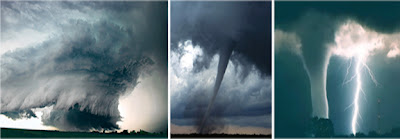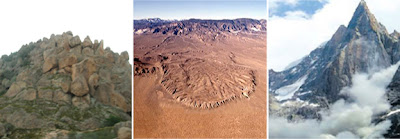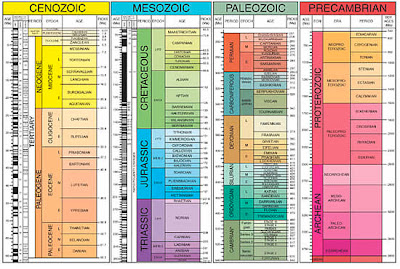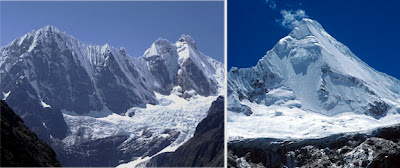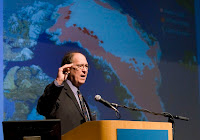The three
questions covered in the previous three posts should show to even the most
novice of geographers that the Land of Promise in the Book of Mormon could only
be located in one area—the Andean coastal plain of South America. Or more
specifically, northern Chile, Peru, western Bolivia, Ecuador and southern
Colombia, when the eastern part of the continent was mostly under water, which was shown conclusively in the several previous posts.
When we
consider the three questions asked and answered earlier, we find that 1) the
earth is 13,000 years old, 2) the earth did not always have the physical
appearance it now has, and 3) during the events in 3 Nephi, the Andes fault
line was raised as a result of the Nazca tectonic plate subducting beneath the
South American Plate, thus raising the Andes Mountains and the land mass east
of the Andes.
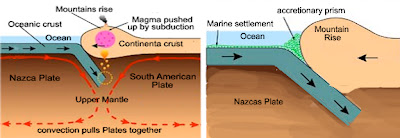
Left: The magma pushed up by the subduction of the Nazca Plate beneath the South American Plate creates volcanoes and granite masses in overlying plate, bringing the continent higher; Right: Marine sediments and rocks on the top of the subducting plate are scraped off and stick to the edge of the overriding plate to form an accretionary prism or wedge
Off the coast of South America, along
the Peru-Chile trench, the oceanic Nazca Plate is pushing into, and is being
subducted under, the continental part of the South American Plate. In turn, the
overriding South American Plate is being lifted up and folded, creating the towering Andes
mountains, the backbone of the continent, and dragging upward with them the
lowlands of the eastern portion of the continent. Partial melting of the
subducted oceanic crust gives rise to andesitic volcanism parallel to the
subduction zone.
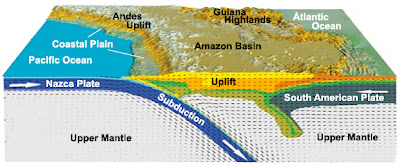 Where an oceanic plate is subducted beneath continental crust, the
magma produced by subductive melting erupts from volcanoes situated among long,
linear mountain chains, such as the Andes in South America
Where an oceanic plate is subducted beneath continental crust, the
magma produced by subductive melting erupts from volcanoes situated among long,
linear mountain chains, such as the Andes in South America
Because continental crust is less dense
than oceanic crust, oceanic crust will always be subducted under continental
crust, creating strong, destructive earthquakes and the rapid uplift of
mountain ranges, which are common in this region.
According to the National Oceanography
Center in Southampton, the most obvious features of continental-oceanic
destructive margins during subduction are the linear belts of fold mountains
which run along the boundaries of the overriding continental plate. “An example
of such a belt is the Andes in South America.” The mountains are formed when
rocks and sediment on the edge of the overriding plate gets compressed and
crumpled.
The Nazca’s Plate movement sliding
beneath the South American Plate has given rise to great volcanoes, and the
squeezing of South America results in great earthquakes, and the entire
continent, as it rose, crumpled South America permanently, building the Andes.
This is supported by the SNAPP Project GPS findings showing this subduction and
the resultant events.
That the above events happened in the
short period of three hours according to the prophesy of Samuel the Lamanite,
and the record of the Disciple Nephi, differs greatly from the geologic record
scientists have compiled, but when we eliminate the 4.55 billion year Earth age
and realign it to the 13,000 years of scripture, the events make far more
sense, and shows the great power of the Lord.
That knowledge is accruing at
unprecedented rates on the Earth is certain. God is pouring forth this knowledge
for our benefit in these latter days, that we might understand what has, is and
will happen on the earth, in the earth, and beneath the earth.
Truly one of the “signs of the times” and
“what is expedient for [us] to understand,” we “shall be shown forth in the
heavens above, and in the earth beneath” (D&C 45:40), and “of things both in
heaven and in the earth, an under the earth, things which have been, things
which are, things which must surely come to pass” (D&C 88:79).
Because
it is important to understand this evolution of a continent, we are repeating
it here as to how the South American continent formed, and how the eastern part
raised out of the sea long after the western part:
 The Rising of the Continent: A:
Initially there was oceanic crust convergence with oceanic plates, forming a
western plain; B: Sediment was shed from the arc and was compressed and pushed
against the arc, forcing land upward extending the narrow plain above the
surface; C: The continent was
eroded and quartz, feldspar, and clay-rich sediments accumulated around its
margins, while subduction pushed up new folded mountain belts, accompanied by
metamorphism and granite plutonism as the Andes fault line rose and the
mountains pushed upward; D: The rise of the mountains brought accretion and the
eastern lands higher toward and above the surface [1=continental rise;
2=continental shelf; 3=western coastal plain; 4=Andes mountains; 5=lowlands,
including the Amazon Basin]
The Rising of the Continent: A:
Initially there was oceanic crust convergence with oceanic plates, forming a
western plain; B: Sediment was shed from the arc and was compressed and pushed
against the arc, forcing land upward extending the narrow plain above the
surface; C: The continent was
eroded and quartz, feldspar, and clay-rich sediments accumulated around its
margins, while subduction pushed up new folded mountain belts, accompanied by
metamorphism and granite plutonism as the Andes fault line rose and the
mountains pushed upward; D: The rise of the mountains brought accretion and the
eastern lands higher toward and above the surface [1=continental rise;
2=continental shelf; 3=western coastal plain; 4=Andes mountains; 5=lowlands,
including the Amazon Basin]
Scientists tell us the earthquakes of Ecuador and most of
western South America are due to strains generated by ongoing subduction of the Nazca plate beneath the South America plate.
At this latitude, the oceanic Nazca plate moves east relative to the South
America plate at a rate of about 7 cm
per year. It is overridden by the South America plate at the Peru-Chile
trench, west of the Ecuadoran coast, and sinks into the earth’s mantle beneath
the South America plate. The subducted
Nazca plate is seismically active to depths of about 400 miles. At the time
of the Lord’s crucifixion, when this plate activity was heightened, the
subducting of the Nazca Plate lifted the Andes fault line into mountains,
“whose height was great,” tilted the continent as it rose with the Andes, from
west to east as the South American Plate rose over the Nazca Plate, creating
the continent as we now see it. This subduction created enormous earthquakes
that lasted for three hours and brought about the terrible destruction we read
about in 3 Nephi. Had this "sudden" 3-hour subduction lasted longer, we would see the continent toward the southeast more or less above sea level all the way to the Falkland Islands.

